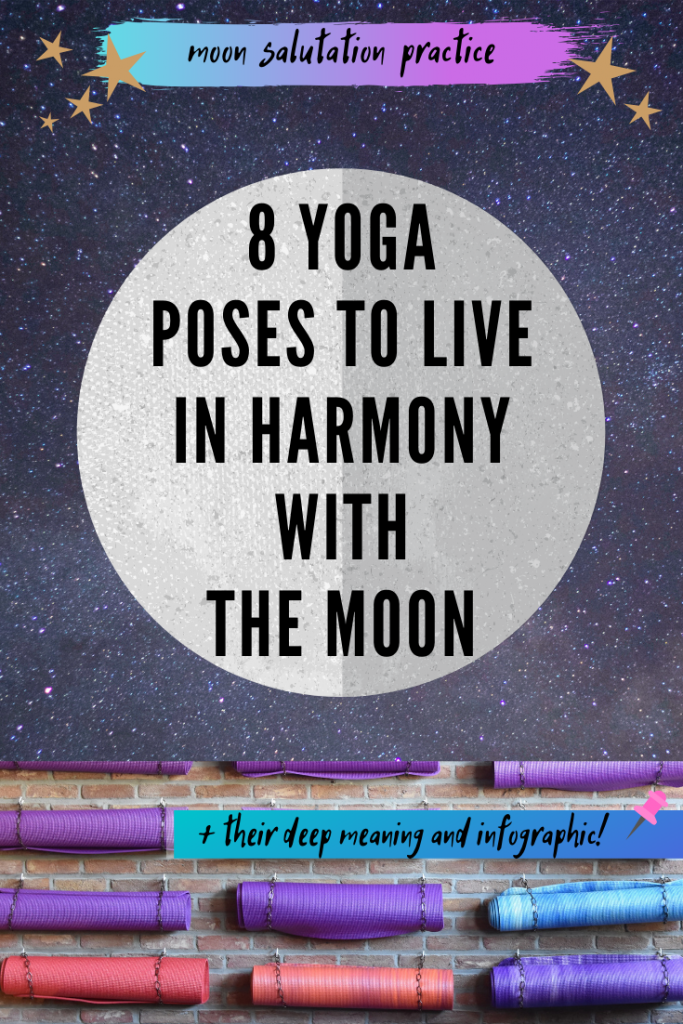

It occurs one week after the new moon and one week before the full moon.

Virabhadrasana I, II, and III, or Warrior I, Warrior II, and Warrior III.Dandayamana Janushirasana, or Standing Head-to-Knee Pose.Ideal poses for the waxing crescent moon are: Practice pranayama breathing to build heat.
New moon yoga sequence series#
Stay on your feet with a longer series of standing poses.Try a slightly more energetic flow to encourage physical and mental growth.Introduce strength building into your practice.
New moon yoga sequence how to#
How to practice during the waxing crescent moon: “Gentle hip opening to release emotions in the body can be useful at this time,” she says. Tree Pose and other balance poses like Warrior III, Dancer Pose, and Eagle PoseĪppleby recommends focusing on building new habits and opening your body to new possibilities during the waxing crescent moon.Viparita Karani, or Legs Up the Wall Pose.Consider incorporating Ajna chakra practices.Focus on shifting your perspective and visualizing new beginnings.Keep your practice slow and meditative.Focus on setting intentions for the next lunar cycle.In other traditions, a restorative or gentle yin practice is preferred.

In Ashtanga practice, yogis abstain from practicing on the day of the new moon altogether. This makes it a good time to “clear the space to plant seeds for the next creative cycle,” says Craig. The new moon is a time of change and renewal. While the science is mixed, linking your practice with the moon can still be a meaningful way to honor the moon and its mystery.Īppleby and Craig offer suggestions to attune your practice to the lunar cycle. However, the same study and another 2021 study did find a link between lunar phase and sleep. This is also true when it comes to menstruation.Ī 2006 review suggests that the moon’s gravitational pull may be linked to the release of neurohormones in mice, but a 2021 study found no association between the onset of a menstrual cycle and the lunar phase. Still, much of the research around moon phases and human physiology is mixed.

The visible shape of the moon changes as it orbits around the Earth roughly every 27 days and is hit by more or fewer of the Sun’s rays.Īccording to some studies, there may be a correlation between the moon and the human body.Ī 2013 study of male university students found their heart rate and blood pressure were both lower during full and new moons. Scientifically, the lunar cycle refers to the eight phases of the moon as seen from Earth. In other words, shifting our practice to sync up with our energy as it changes throughout the lunar cycle can help us better understand ourselves in relation to the natural world. “Becoming more in tune with the different phases of the moon can really help you understand your emotions and expand your yogi’s practice,” she says. Yoga teacher Pearl Appleby also bases her practices around the phases of the moon. “Just as the moon’s gravitational pull affects the tides, so too does it affect the human body, which is 60 percent water,” she says. Yoga is about self-realization, and when we connect to the lunar cycles we tune into our true nature.”Ĭraig believes that the moon cycle can have real influences on our energy levels, though scientific evidence is mixed. “By attuning to the rhythms of natural cycles, such as the lunar cycle, we’re attempting to tap into the intelligence within, from which the cycle originates. “There’s a natural cycle of life, moving through beginning, sustaining, and letting go,” says Craig. Louisa Craig is a registered senior yoga teacher with Yoga Alliance Professionals and director of LKY Yoga School. Honoring the phases of the moon is an ancient part of yoga that many practitioners carry on today.


 0 kommentar(er)
0 kommentar(er)
